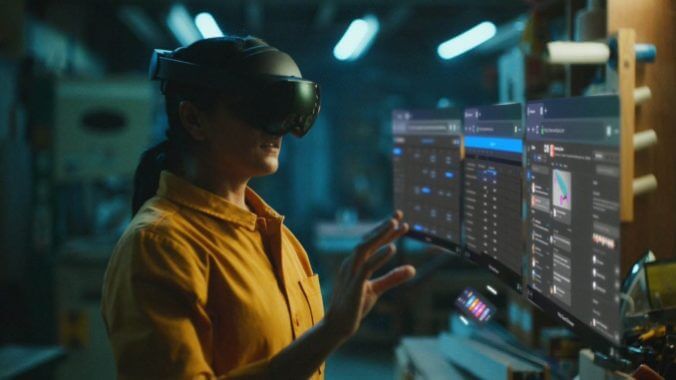Meta’s $1500 Quest Pro VR Headset Shows The Promise Of The Metaverse Is Still Far Off
Images via Meta
The VR headset of the future is here in Meta’s Quest Pro;, and though it’s admittedly awesome (as far as VR headsets are concerned), it’s also clearly a stepping stone to whatever’s next—and clear proof we still have a long way to go before we get there.
Tech giants like Meta and Apple have spent the past few years pumping billions into R&D to develop virtual and augmented reality tech aimed at establishing a beachhead in the nascent, hard-to-explain metaverse we’ve been repeatedly told is the future of the internet.
Meta, through its acquisition of VR darling Oculus, has proven to be one of the first major players in the market—and the company just took its biggest swing yet in putting together the wearable tech we’ll need to work and play in the metaverse. Oculus helped establish the VR market with its early headsets, which cost in the $300-$750 range, depending on specs. The Oculus Quest 2 has been the biggest breakout hit, selling millions of headsets at a more affordable price point in the $399-499 range.
But now, Meta is looking to up its game with a flagship headset being positioned as the company’s centerpiece of its metaverse strategy, with the hardware to do the stuff they really want to do. The metaverse is supposed to be the place where we have meetings, work, hang out and play games—and Meta believes the Quest Pro will be the first device to take the first step toward getting us there in a real way. It costs a whopping $1,500 and goes on sale in late October.
It’s also loaded with cutting-edge tech, hence the high-end price point. The device runs off Qualcomm’s Snapdragon XR2+ platform, comes loaded with 12GB of RAM, 256GB of storage, and 10 high-res sensors. The headset has also been redesigned for better ergonomics (and general coolness), with a sleek black design and new eye tracking and sensor tech designed to better capture natural facial expressions.
-

-

-

-

-

-

-

-

-

-

-

-

-

-

-

-

-

-

-

-

-

-

-

-

-

-

-

-

-

-

-

-

-

-

-

-

-

-

-

-








































